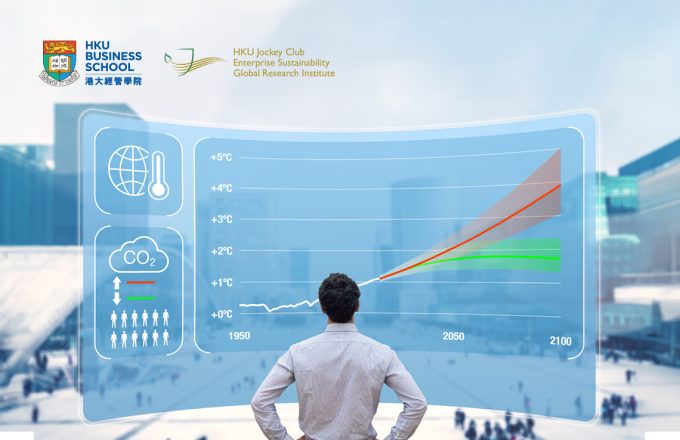Carry trade by Trucks

New research shows that traders can bypass capital controls by transporting goods across borders by truck to reap currency carry rewards. We look at how they do it and what the consequences are
Currency carry trade is a form of arbitrage in which borrowings are made in one currency that has a low interest rate, and loaned or invested in another currency with a higher interest rate.
The currency carry trade is a common activity in many financial markets, but some countries impose capital controls to restrict or ban the trade. This is the case in about 40 percent of the world’s countries, including China. But the potential rewards from the currency carry trade entice some traders to get around the restrictions, including through the physical movement of goods across borders. New research offers evidence that indirect currency carry trade takes place through round-trip reimports across the border between mainland China and Hong Kong.
The attraction of the currency carry trade
Conducting currency carry to evade capital controls is illegal and can result in fines or imprisonment for those involved. That’s on top of the risks of exchange rate fluctuations that can cut expected profits. The potential returns in the carry trade need to be high to convince traders to take the risk. They often are—according to a report from Bank of America Merrill Lynch that is cited in the new research, annualized returns on a US$1 million borrowing can be as high as 10 percent.
The appeal lies in the difference in interest rates. Since the global financial crisis of 2008, major economies including the US lowered their interest rates to close to zero. In other countries including China, however, the rate is higher.
A comparison of interbank lending rates shows the size of these rate differences. For example, the offer rate in London during 2010 to 2015 for the US dollar ranged between 0.23 percent and 0.43 percent for a three-month Libor. In comparison, the equivalent rate for the RMB in Shanghai was 2.5 percent to 5.2 percent.
Add to that the higher value of the renminbi to the US dollar. Since the renminbi was unpegged from the dollar in 2005, the renminbi’s value increased to 6.04 to the US dollar in 2014, up from 8.28 in 2005.
It’s clear that traders can turn a profit by borrowing in US dollars and lending or investing in renminbi. However, as capital controls are in operation in China and currency trading is tightly controlled, this currency carry trade cannot be done in financial markets. But while currency trading is restricted, trade of goods is less so. This leaves open the possibility to conduct what the authors call “currency carry trade by trucks”, where goods are sold in one currency and paid for in another.
The potential appeal of this kind of currency carry trade is not specific to mainland China or Hong Kong. It can apply to any country which has capital controls and free cross-border movement of goods.
But the China-Hong Kong trade is particularly attractive for both sides. Hong Kong’s currency is pegged to the US dollar, and its interest rate moves in tandem with the US dollar. For Chinese companies, an added attraction in trading with Hong Kong is the convenience and proximity of direct trade over land.
Round-trip Reimports
After scrutinizing trade data from China and Hong Kong, the authors concluded that that round-trip reimports are likely used to conduct currency carry trade across the border.
Reimports are the export and reimports of the same, sometimes slightly processed, goods. One country exports goods to a second country, and then reimports the same goods back from the second country.
Reimports account for about 8 percent of China’s total imports, meaning that China itself is the fifth largest source of China’s imports. Reimports also account for almost 90 percent of China’s total imports from Hong Kong. Most of this trade is conducted overland, across the Hong Kong-Shenzhen border.
Reimports are a normal part of business for many Hong Kong companies. In recent decades, Hong Kong’s manufacturing has moved almost in its entirety to the mainland, due to space and cost constraints and the growth of Hong Kong’s service industry. Many companies open factories in neighbouring Guangdong province and keep a distribution centre in Hong Kong. The factories typically send the products to Hong Kong for sorting and labelling and the goods are then re-exported globally to locations around the world, including China.
In other cases, the goods are exported from China to Hong Kong before being reimported to China to allow companies to benefit from tax advantages such as exemptions from import duties or reductions in value added tax.
How it works
A company or agent in Hong Kong takes out a loan in Hong Kong dollars from a Hong Kong bank in order to buy goods from China. The company pays a low interest rate for the loan. The goods are paid for and delivered to Hong Kong. The Chinese firm invests the payment received in a local financial or wealth management product that pays a higher rate of interest than the rate charged from the original loan in Hong Kong.
When the product matures, the Chinese firm reimports the goods from Hong Kong, and converts the total investment pay out from renminbi to Hong Kong dollars, often making a tidy profit.
This is the same path followed by the currency carry trade when it is conducted in financial markets: borrow US dollars at a low interest rate and invest the loan in renminbi at a higher interest rate.
Taxes on cross-border capital flows are a common way to stem these flows, but the taxes are not always fully enforceable.
It might be expected that countries with greater state control of the economy—such as China, through its state-owned enterprises—would see a lower incidence of the carry trade. In fact, the researchers found that the opposite was true: SOEs were more likely to conduct carry trade activities than other firms.
Tracking the trade
The Guangdong-Hong Kong route offers important advantages to the reimport trade. As well as proximity and the ease of sharing a border, China and Hong Kong benefit from the CEPA (Closer Economic Partnership Arrangement), which allows for zero tariffs on imports between the two places. This makes reimports via Hong Kong highly cost effective.
The new research found that most of the goods moved between Hong Kong and mainland China travel between Hong Kong and Shenzhen by truck, in some cases departing Shenzhen in the morning and returning with the same goods on board in the evening.
To discover the scale of the business, the researchers scrutinized trade data from China and Hong Kong. In particular, they looked at annual reimport data from China Customs with a focus on the weight of the goods in the transports. They reasoned that goods with a higher value-to-weight (V/W) ratio, such as mobile phone parts, semi-conductors, integrated circuits and small LCD panels, would be the most attractive to currency carry traders because they would be more profitable and also because they would incur lower transportation costs in both directions.
This proved to be the case. The average V/W in China’s reimports is US$8.14/kg compared to China’s overall imports which have a V/W of US$0.63/kg and exports with a V/W of US$0.95/kg.
The researchers write: “…using annual reimport data from China Customs, we find a strong correlation between China’s reimports and carry trade returns, especially for products with lower trade costs, as measured by higher values per kg (value/weight). We interpret this as evidence of currency carry trade…”
Over time, changes to capital controls, exchanges rates and interest rates may make the carry trade less lucrative and attractive. In the meantime, however, the effective bypassing of capital controls incurs a loss for China’s revenue coffers.
“The evidence of currency carry trade through fake goods trade shows that the effectiveness of China’s capital controls is compromised,” write the researchers. “This is a good example of how market forces can sneak in from the back door.”
About this Research
Xuepengj Liu, Heiwai Tang, Zhi Wang and Shang-Jin Wei (2023). Currency Carry Trade by Trucks: The Curious Case of China’s Massive Imports from Itself. Review of Finance 27(2):469–493







